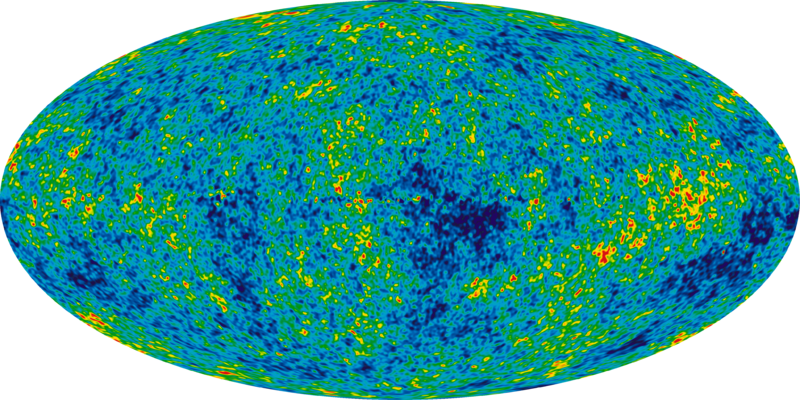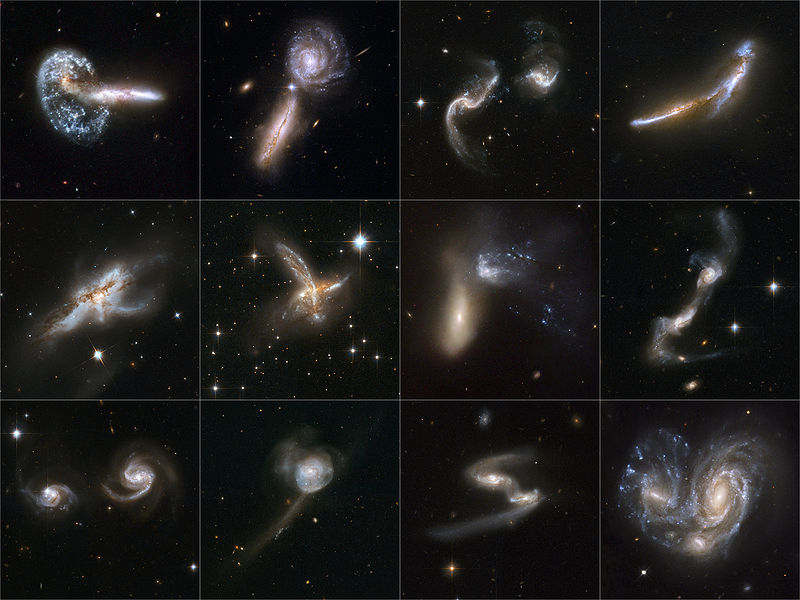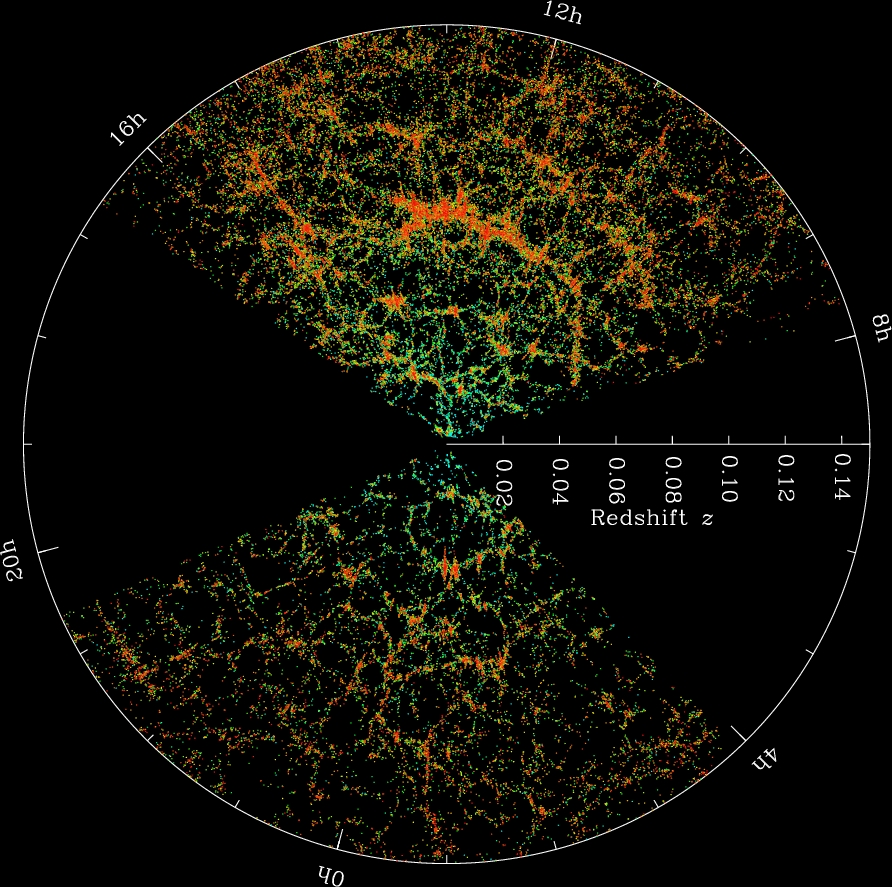From sugar lumps to galaxies and superclusters
FAS member Charles Dixon had the ambitious title of “Galaxies and Large Scale Structures” for his talk to us in November 2018 and it was, as always with Charles, a thoroughly-researched presentation which took us at a fair lick from the Big Bang to the current understanding of the development of the Universe including the role of the network of dark matter in forming galaxies
A sense of scale
His start was deceptively simple, given what was to come. He wanted to give us some handle on the numbers involved when we talk about billions of stars in a galaxy and billions of galaxies in the Universe. He reckoned that a sugar lump was made of about 1000 grains of sugar; a kg bag of sugar will have about a million grains; a standard builder’s bag will have about a billion grains, a lorry might be able to carry 10 such bags , thus we would need a fleet of 20 lorries with all those bags to represent 200 billion which in very round numbers is the value often given for the number of stars in the Milky Way.
The earliest stages
We think we know in amazing detail about the very early stages following the Big Bang. Inflation happens; matter and anti-matter are created, though importantly with slightly more matter than antimatter ; the antimatter is annihilated; particles are moving violently enough for hydrogen to fuse into helium and by 20 minutes we were left with a plasma of oppositely charged particles. As time passes, the Universe eventually becomes cool enough for the protons and electrons to recombine, a process which also releases energy which we now detect as the Cosmic Background Microwave Radiation (CMBR).
Gravitational hot spots leading to first light
The recombination phase of the charged particles is thought to have happened after about 380,000 years at which stage the matter of the Universe is essentially in the form mainly of hydrogen gas. Maps of CBMR in effect show the distribution of material in the Universe at this early stage and it is clear there were already minor hot spots and voids.

These set the conditions for the large scale structure we now have. Gravitational attraction served to pull material towards those hot spots, resulting in the first stars forming between 200-300 million years after the Big Bang. This is sometimes called “first light”. These stars were probably massive blue giants which were very short-lived, exploding as supernovae thus populating the Universe with elements and leaving black holes. There is a second phase of star formation and then small galaxy formation from about 500 million years, peaking around 2 billion years.
The maturing Universe
By 6 billions years, the Universe was maturing to form the structures we can see today, a process which is still on-going. Galaxies experience mutual gravitational attraction and there can be near misses, collisions and mergers happening. For example, our Milky Way formed by acting as a “cannibal” for neighbouring small galaxies. The Hubble telescope has recorded many instances of interacting galaxies.

The term I like most is “galaxy harassment”. This occurs if there is a fast-moving galaxy in an area with a relatively high density of galaxies. There are frequent encounters which can affect the fast-moving galaxy although it does pass through rather than merging with other galaxies.
Bigger and bigger
Gravitational attraction is also at work to form large scale structures of galaxies. There are three such structures which are thought to be gravitationally bound : Groups, Clusters and Superclusters. The Milky Way is part of the Local Group of about 40 galaxies, along with Andromeda Galaxy and the Magellanic Clouds to name the most well-known ones. The Local Group is just part of the Virgo Cluster comprising 1400 galaxies with more such Clusters making up the Virgo Supercluster which is over 100 million light years across. It is now thought that this is in its turn part of an even larger Supercluster of maybe 100,000 galaxies called the Laniakea Supercluster which has the Great Attractor at its centre.
The role of the cosmic web of dark matter
The distribution of these large scale structures is not uniform. Rather their distribution is determined by the cosmic web of dark matter, providing the main gravitational attraction. This web is characterised by filaments now decorated with Galaxies, Clusters and Superclusters, as shown in images from the Sloan Digital Sky Survey.

There would not be enough gravitational attraction just from the observable matter in the galaxies to overcome the Hubble flow from the Big Bang and produce clumping rather than continuing expansion. The dark matter is needed to produce the observed distribution.
Even bigger and bigger
There are even larger structures : Walls and Great Walls, such as the Sloan Great Wall. This is thought to be over a 1000 million light years long and stretches across about 1/6 of the observable Universe. All the galaxies within it are not thought to be gravitationally bound to one another or a central attractor. They just happen to lie along the same dark matter filament.
I hope this account is reasonably accurate. Any errors in it are mine not Charles’s.
Image credits :
WMAP map of CMBR : NASA / WMAP Science Team
Whirlpool galaxy : NASA/JPL-Caltech/Univ. of Arizona/DSS/SST
Galaxies on filaments : M Blanton and Sloan Digital Sky Survey.
Montage of interacting filaments : NASA, ESA, the Hubble Heritage (STScI/AURA)-ESA/Hubble Collaboration, and A. Evans (University of Virginia, Charlottesville/NRAO/Stony Brook University)
Talk given by FAS member Charles Dixon
Post written by Katherine Rusbridge
Nov 2018
